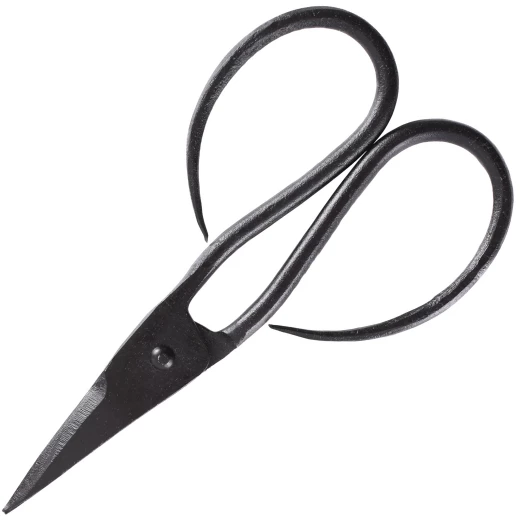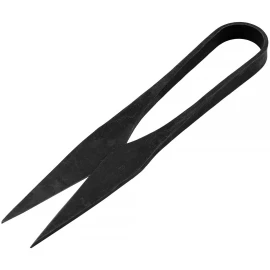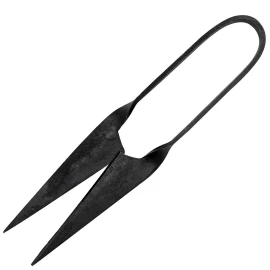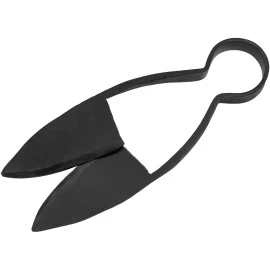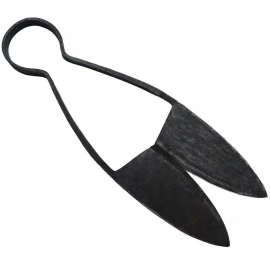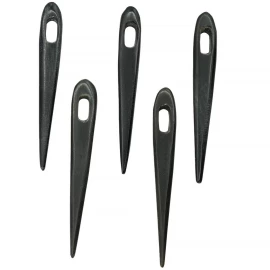Middle Ages hand-forged pivot Scissors
The medieval shears we offer here are hand-crafted. Each scissor half was forged from one continuous piece of steel and the two halves were then riveted together in the centre. The shanks elegantly curve back upward to form generously sized finger rings, making the scissors easier to hold and use, even with larger hands. The forging marks were intentionally left visible to lend a rustic, authentic character to the historical shears, and the surface was blackened to improve rust resistance. Although fully functional, these period-style scissors have just slightly sharpened edges which may have to be re-ground to improve sharpness if needed. Further product information ...
Middle Ages hand-forged pivot Scissors
This fine, visually appealing blacksmithing piece is perfectly suited for camp life at medieval markets and re-enactment or living history events and will be a great decorative prop for any medieval seamstress, herb woman or barber surgeon.
- Material: forged carbon steel (not stainless)
- Overall length: approx. 19cm
- Length of the blades: approx. 8.5cm (cutting edges approx. 5cm)
- Width (when closed): approx. 10.5cm
- Finger holes: approx. 7.5 x 4cm (each)
- Weight: approx. 172 g
Please note:
- Above specs may slightly vary from piece to piece. As this is a hand-forged product, each pair of scissors is a very unique piece and slight variations in shape and/or surface finish are quite normal. Above pictures are thus for reference only.
- The steel used here is not rust-proof and might show slight surface tarnishing in places. We recommend you to maintain the scissors on a regular basis, for example by using Ballistol Universal Oil, which is ideally suited for steel care.
While earliest evidence of the use of so-called spring scissors reaches as far back as the 15th c. BC in Mesopotamia and Ancient Egypt, "modern" pivot or pivoted scissors (two cross-blades attached at a pivot point) first appeared in Ancient Rome around 100 AD. Although they did not fully supersede the spring scissors until the Renaissance period in Europe, they were nonetheless already in use in the Middle Ages, as can be seen for instance on the Tailor's Window in the 13th c. Freiburg Minster, Germany. In terms of basic design and functionality, they have remained virtually unchanged since then and continue to see service to this very day in the widest range of forms.
We are here for you!


